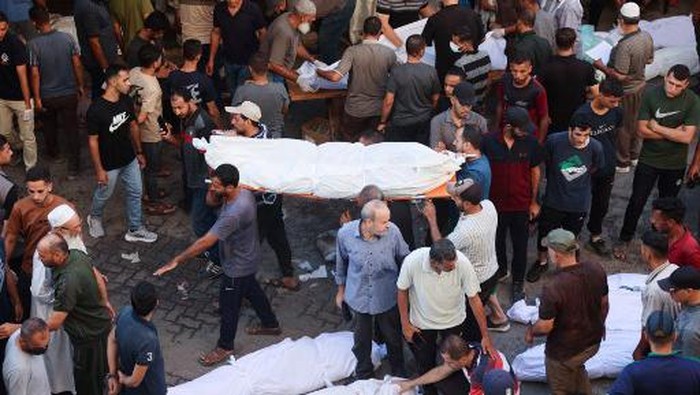
Photo: AFP/OMAR AL-QATTAA
In a devastating turn of events, Israeli airstrikes targeting a school in Gaza have left nearly 100 individuals dead, prompting expressions of profound concern from the White House. This incident underscores the mounting humanitarian crisis in the region, as the ongoing conflict ravages the lives of countless innocent civilians.
The Attack on the School
On August 10, 2024, Israeli forces launched an aerial assault on a school in Gaza, which had been serving as a refuge for displaced families due to the ongoing conflict. Eyewitness accounts and video footage from the aftermath reveal the harrowing scene: dismembered bodies strewn amidst debris, as rescuers struggled to recover the lifeless remains, draped in blankets.
Vice President Kamala Harris, a candidate for the Democratic presidential nomination, voiced her deep concern over the tragic loss of civilian lives. She stated, "Once again, too many civilians have been killed," emphasizing the urgent need for a ceasefire in Gaza.
Furthermore, the White House articulated its disquiet regarding the civilian casualties, stating, "We are very concerned about reports of civilian casualties in Gaza following attacks by the Israel Defense Forces on complex that includes a school."
U.S. Assistance and Criticism
As the crisis continues to escalate, the United States has faced increasing domestic and international criticism for its military support of Israel. Reports indicated that just a day before the airstrike, the U.S. announced a $3.5 billion military aid package for Israel, aimed at bolstering its defense capabilities.
The administration has acknowledged the troubling reality that "Hamas has used schools as locations to gather and operate," yet it has reiterated the necessity for Israel to take steps to minimize civilian harm. This suggests a recognition of both the strategic complexities of the conflict and the urgent humanitarian implications.
Consequences of the Airstrike
The tragic airstrike occurred amid the ongoing humanitarian crisis, as tens of thousands of Palestinians have sought refuge in schools, most of which have been shuttered since the conflict began ten months ago. The struck school was reported to house around 350 families, fleeing from the devastation that has become a hallmark of the ongoing violence.
According to data from the Gaza Emergency Services, the assault resulted in the deaths of approximately 100 individuals, a claim that Israel has disputed, asserting that 19 of the fatalities were members of Palestinian militant groups. However, distressingly, reports confirm that among the deceased were civilians, including children and women. Mahmoud Bassal, a spokesperson for Palestine's civil defense, noted, “So far, there are more than 93 martyrs, including 11 children and six women. There are unidentified corpses.”
The Aftermath and Wider Impact
Evidence from the aftermath of the airstrike reveals the dire conditions faced by the survivors, with the scene littered with empty food cans, burnt mattresses, and children's toys. This tragic incident has drawn sharp condemnation from various nations, including Egypt, Qatar, the United Arab Emirates, Saudi Arabia, and Turkey.
The relentless bombardment—having led to the deaths of nearly 40,000 Palestinians and the displacement of approximately 2.3 million individuals—highlights the severe humanitarian plight unfolding in Gaza.
In an official statement, the Israeli military maintained that the attack involved the use of “three precision munitions," claiming that such an arsenal would not yield the extensive damage reported. This denial raises further questions regarding the conduct of military operations in densely populated civilian areas and the protocols in place to protect non-combatants.



